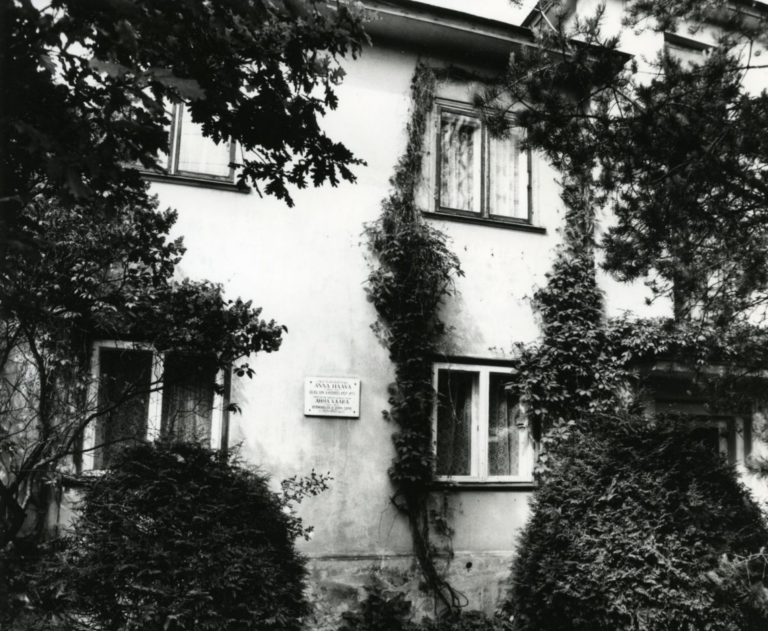
8 Koidula Street (KM EKLA, C-37:1096)
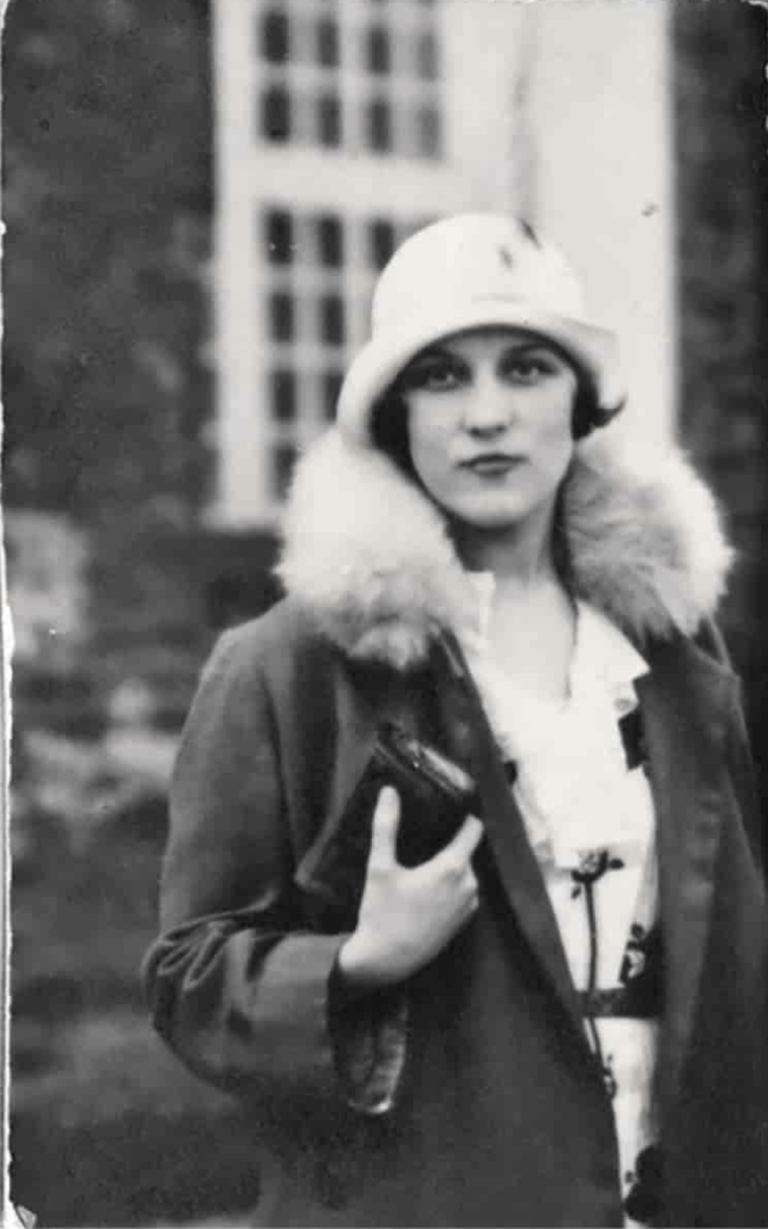
Betti Alver (Store Norske Leksikon)
Koidula 8
- The residence of the poets Betti Alver and Anna Haava.
8 Koidula Street and Betti Alver and Anna Haava
Two poetesses, Anna Haava and Betti Alver, have lived in this building, and even in the same apartment. The former referred to herself as a ‘Heath Flower’, the latter as a ‘Railway Flower’.
Anna Haava (1964-1957) came from Haavakivi Farm in Kodavere. Her first published work was a poem which was dedicated to Lydia Koidula. This was published in the ‘Postimees’ newspaper under the pseudonym of ‘a young Estonian girl’. The motifs of her further creations included everyday rural life and nature, with a love of her homeland remaining the prevailing theme. In what are perhaps her most famous verses, Anna Haava opens up on her inner world and positions herself next to other writers:
I cannot remain silent,
stop singing –
silence would be wrong,
it would make my heart burst…
Miina Härma has turned those verses into a song.
Tartu’s city government authority in 1939 gave the apartment at 8-2 Koidula Street to the poetess. Haava lived in modest conditions, having used a bed and a small table from her home farm to furnish the room. Even though she did socialise with the cultural circles of Tartu, she often preferred to keep her own company. The chandelier in the apartment, though, was also held in high regard by the apartment’s next resident: Betti Alver. She always stressed to her visitors that Anna Haava had been the initial owner of the chandelier. Once, when Betti Alver was visiting Anna Haava, she admitted that she had loved to hear her mother recite poems by Haava when she was a child.
‘How could you have known me as a child?’, Haava had asked.
‘My mother often reads your poems to me.’
‘And how is your mother doing now?’
“She is ill.”
‘Go and see your mother first and then come to me,’ Anna Haava said.
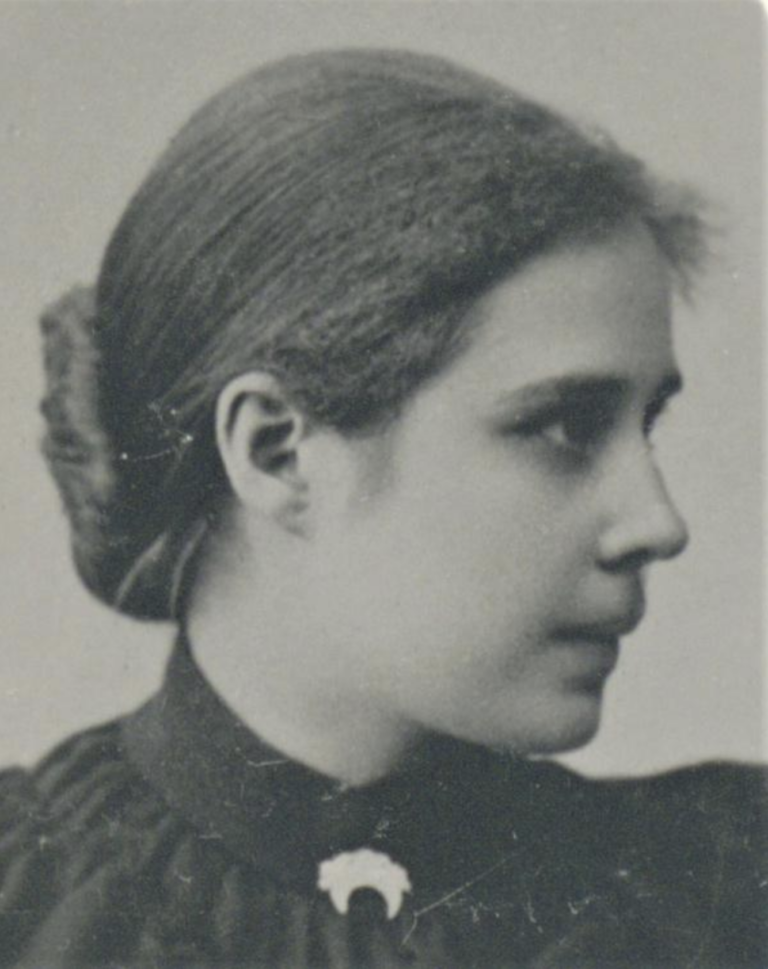
Anna Haava as a young woman (Photo: Wilhelm Staden / ERM)

A photo of Tähtvere in Tartu, taken by Karl Hintzer in the winter of 1939/1940 (ERM Fk 908:10)
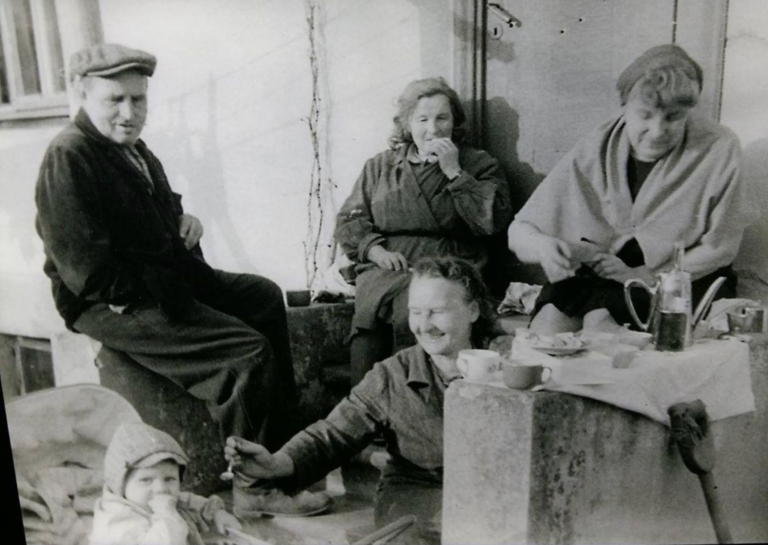
Betti Alver under her apartment window in Koidula Street (The Betti Alver Museum)
Betti Alver’s birth home is in Jõgeva, but her studies brought her to Tartu. Alver submitted her first book, ‘Tuulearmuke’ (‘The Wind’s Paramour’) to a novel contest, as suggested by Friedebert Tuglas, when she was still attending gymnasium, and she came second in that contest. Thereafter, Alver, outstanding amongst the rest of the ‘Arbujad’ (‘Soothsayers’) group, was getting noticed more and more. She performed frequently with her companions at the ‘Ko-Ko-Ko’ café and also attended debate meetings by the Veljesto Students Society. Veljesto was probably also where Alver met her future husband, the poet Heiti Talvik. She published her book of poetry in 1936 entitled ‘Tolm ja tuli’ (‘Dust and Fire’). Heiti Talvik had encouraged Alver to switch from prose to poetry, and the creative journey of these spouses could have lasted for many more years. War and repressions unfortunately changed their status: Heiti Talvik was arrested in 1945 and died two years later in a prison camp in Tyumen Oblast. Alver was held in disgrace during the occupation years. This and what she suffered at the time resulted in an almost thirty-year break in her creative life.
Alver moved with her second husband Mart Lepik in 1957 into the apartment which Anna Haava had vacated. They owned two rooms in the three-room apartment, as the journalist Karl Tamberg was occupying the third room. Alver’s bed was in exactly the same spot as Anna Haava’s had been.
Betti Alver’s apartment was full of flowers, art, and books. Alver really loved the lilac bush in the garden and an apple tree which had been planted by Anna Haava. ‘Mark Lepik and I became total fools for flowers when we gained possession of a strip of soil under Anna Haava’s old windows along with our apartment,’ wrote Alver in 1972.
Alver published the collection, ‘Tähetund’ (‘Stellar Hour’), in 1966, which marked the return of this poetess to the field of literature. It was warmly welcomed by her readers. She also undertook the enormous task of translating Pushkin’s ‘Eugene Onegin’ into Estonian here, and also published the collection, ‘Eluhelbed’ (‘Flakes of Life’), and the short story, ‘Kõmpa’, after the ‘Stellar Hour’. Alver was awarded the honorary title of ‘popular writer’ in 1981. The writer was happy to host friends and students at her home, with them examining her works or creating their own poetry there, inspired by her.
During one of her last trips with friends, Betti Alver saw the Estonian blue, black, and white flag being waved out of a car window, something which moved the poetess a great deal. Freedom was in the air. Betti Alver passed away in 1989 and is buried in the Old St John’s Cemetery (Vana-Jaani) in Raadi in Tartu, next to Mart Lepik.
Laulupeo pst 7 ja Juri Lotman, Zara Mints ning Karl Menning
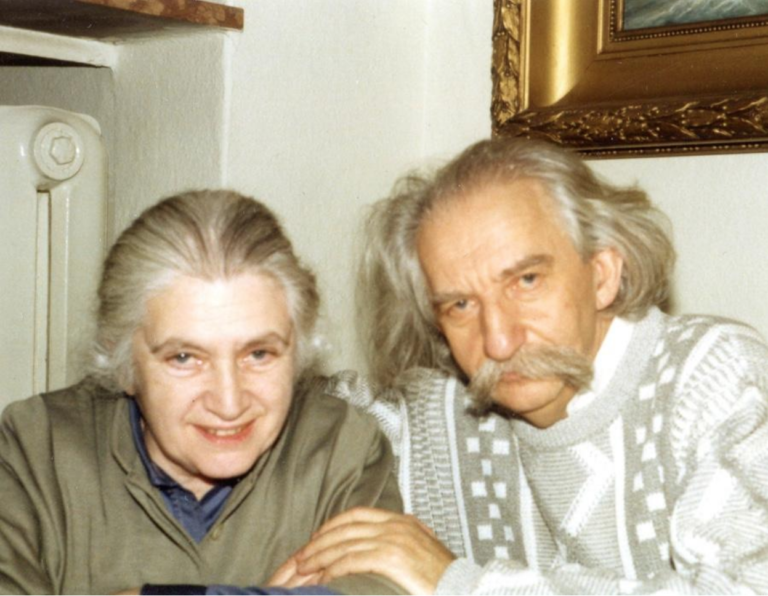
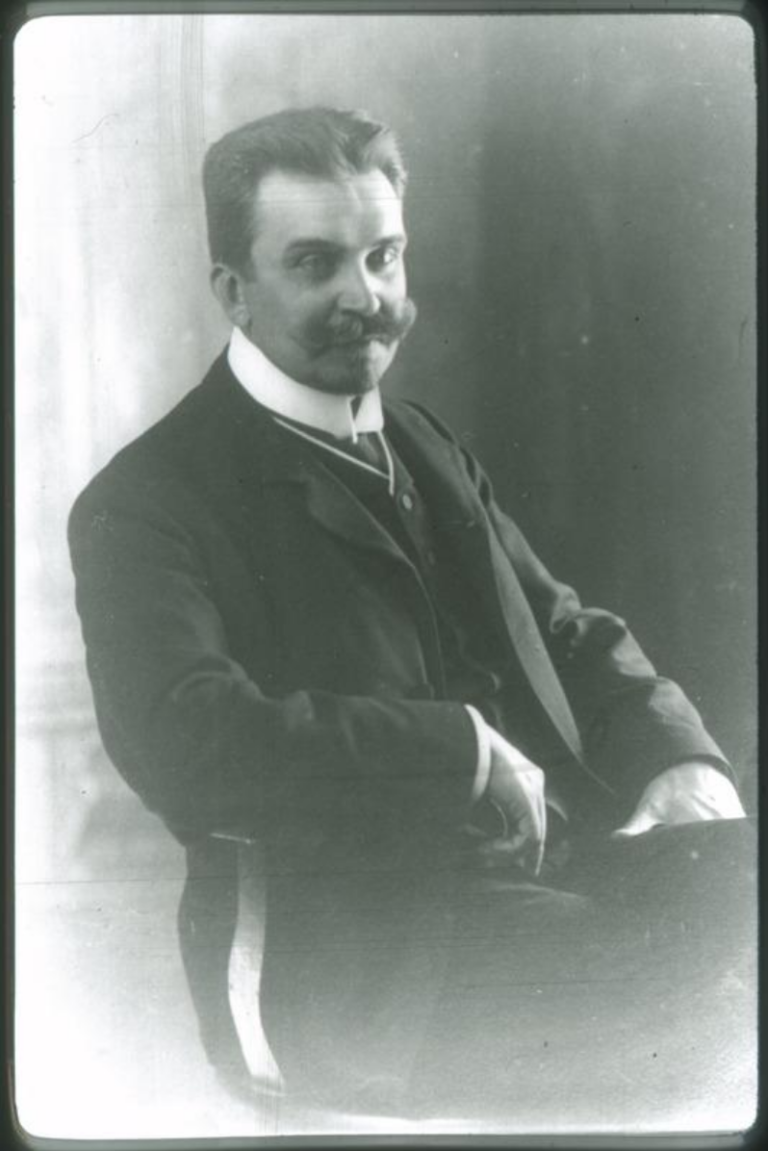
See 1937. aastal arhitekt Ernst Ederbergi projekteeritud hoone aadressil Laulupeo puiestee 7, Emajõe oru rinnakul ehitati algul kahekorruselisena. Muu hoonega osavalt sobitatud kolmas korrus rajati kortermajale peale 1957. aastal.
Selles majas on läbi ajaloo olnud mitmeid tuntud elanikke, palju teatri ja just Vanemuisega seotud isikuid. Kõige tuntum on nendest ehk Vanemuise teatri juht (aastatel 1906‒1914) ja diplomaat Karl Menning (1874‒1941), kellele on pühendatud ka 1970. aastal maja seinale paigaldatud mälestustahvel.
Maja oli ka viimaseks koduks tuntud professoritest abielupaarile, semiootik Juri Lotmanile (1922‒1993) ja kirjandusteadlasele Zara Mintsile (1927‒1990). Hoone asukoht polnud aga eakamatele inimestele just kõige ideaalsem, kuna kesklinna viiv tee kulges mööda Jakobi mäge, mis 1980. aastatel oli järsem kui tänapäeval. Kaasaegsed mäletavad, et isegi bussidel oli mäest üles saamisega raskusi. Libedaga oli mäel tavaline ka kukkumine, nii Mints kui ka Lotman olid seda valusalt kogenud. Kord viidud Lotman luumurruga suisa traumapunkti, kus talle öeldi, et samas kohas murdnud hiljuti käe ka akadeemik Ariste.
Nagu peaaegu kõigil meeldejäävatel ja karismaatilistel õppejõududel Tartus, laienes ka Lotmani ja Mintsi puhul akadeemiline sfäär koju, kuna sageli võõrustati üliõpilasi, kolleege ja kultuuritegelasi oma eluruumides. Juri Lotman oli tuntud selle poolest, et ta suhtus kõikidesse üliõpilastesse lugupidamisega ning nagu on märkinud semiootikaprofessor Peeter Torop, oli ka esimese kursuse tudeng Lotmani jaoks kolleeg. Mõistagi valitses nende kodus eriline vaimne atmosfäär. Samas mäletavad nende lapselapsed, et suurest vaimsest tööst hoolimata oli vanavanematel aega ka lastega mängida ja nende eest hoolitseda. Rebekka Lotman on meenutanud, et just vanaisal olid suurepärased kulinaarsed oskused. On mõistatus, kuidas väga suure koormusega teadlastöö kõrvalt jõuti nii tegusad olla ka koduseinte vahel.
Vaata ka Juri Lotmani telesaate „Vestlusi vene kultuuriloost” osa „Seltskondlik elu”: https://arhiiv.err.ee/video/vaata/vestlusi-vene-kultuuriloost-juri-lotman-seltskondlik-elu